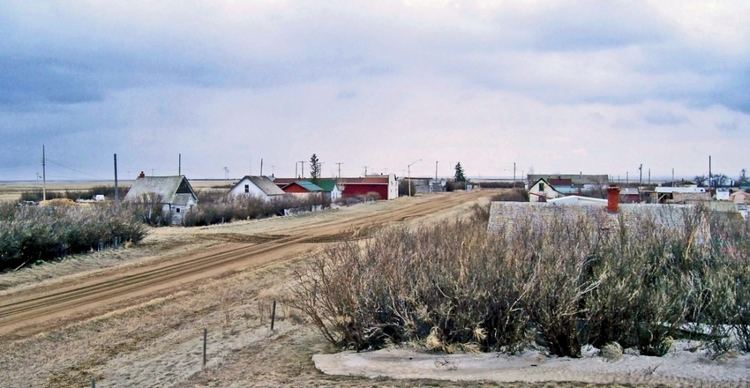Census division 4 Established 1910 Area 7.91 km² Local time Monday 2:02 PM Area code 306 | Region Southwest Rural Municipality Reno Incorporated (Village) 1912 Population 16 (2006) | |
 | ||
Weather 1°C, Wind N at 23 km/h, 56% Humidity | ||
Robsart is an unincorporated community in Reno Rural Municipality No. 51, Saskatchewan, Canada. The population was 16 at the 2006 Census. It previously held the status of a village until January 1, 2002. The community is located 48 km southwest of the Town of Eastend at the junction of Highway 18 and Highway 13 which is also known as the historic Red Coat Trail approximately 170 km south-east of Medicine Hat, Alberta only 68 km south of the Town of Maple Creek.
Contents
- Map of Robsart SK Canada
- Demographics
- Infrastructure
- History
- Boom years
- Great Depression
- An Ode to Robsart
- Attractions
- Notable people
- References
Map of Robsart, SK, Canada
Demographics
Prior to January 1, 2002, Robsart was incorporated as a village, and was dissolved into an unincorporated community under the jurisdiction of the Rural municipality of Reno on that date.
Infrastructure
History
In 1910, Canadian Pacific Railway (CPR) purchased a quarter section of land in the southwest region of Saskatchewan and called it Robsart. The land was named after Amy Robsart, from the Sir Walter Scott book, Kenilworth. Three years later the land was bought by a man named Henry Abbott, who led the first settlers to the new community. Shortly after the settlers arrived, many businesses started to go up quickly. Two of the first businesses were a general store and feed mill, soon following them were 30 other businesses, including a dentist, jeweller, and a surgeon.
Boom years
When the CPR was finished the construction of the Stirling-Weyburn line, this caused a boom bringing in even more prosperity for the small community. Almost weekly new businesses were opening, bringing new hotels, cafés, churches, livery barns, a school, banks, grain elevators, and its own Public hospital which opened its doors in 1917 and still stands today. Ten years after the town of Robsart was established it had a population of 350 residents, its own town hall, mayor, town council, and around more than 50 businesses. The town was so prosperous that one postcard with a picture of Robsart bared the ironic motto “A town with a bright future.”
Great Depression
In the late 1920s, Robsart's prosperous beginnings began a long decline. Starting with a grain elevator fire in 1929, one year later another blaze wiped out a large section of the business core. Next to follow were the Great Depression years, accompanying droughts, falling grain prices and poor crop yields, were the cases for further business closures in the once industrious business core. Many merchants were hit hard by crippling financial losses and had to leave in search for a better way of life. Since the beginning of the Great Depression the community has struggled but never with the same early pioneer optimism.
In the 1980s, locals and nearby farmers rallied together and renovated the old community hall in hopes of reviving the once thriving town, but slowly one by one most remaining businesses and homes were boarded up, including Robsart's Saskatchewan Wheat Pool & Pioneer elevators which were demolished sometime in 2000. Both had played a crucial role in the community over the years. Finally on January 1, 2002, due to dwindling population, the village of Robsart was dissolved and now governed by the Rural municipality of Reno No. 51.
An Ode to Robsart
In the early 1990s, former and current residents of Robsart got together and made a community history book; Our Side of The Hills. Former mayor and resident, Archie Smiley submitted a revised version of an old poem called, "Ode to Robsart".
Attractions
Local Attractions/Sites of Interest:
Regional Attractions:
Notable people
Eiliv Anderson, born in Robsart in 1934 and was a corporate executive, with a degree from the executive program of Queen's University's School of Business.
